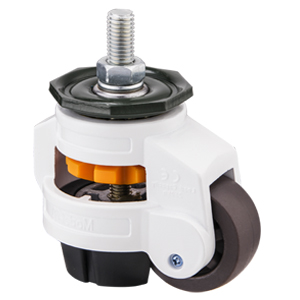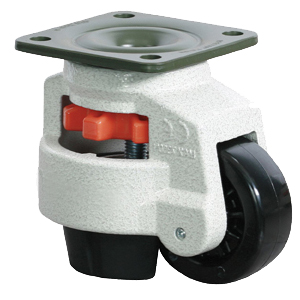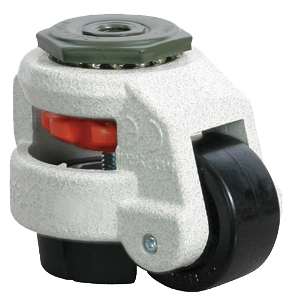- Best Price! Direct China Factory!
- Send Inquiry
WhatsApp/WeChat: 0086-137-36454395
When using leveling caster wheels, also known as leveling casters or self-leveling casters, there are several important points to consider to ensure their effective and safe operation. Leveling casters are designed to provide stability and mobility in various applications, allowing for easy movement and adjustment of equipment or furniture on uneven surfaces. In this comprehensive guide, we will explore the key considerations for using leveling caster wheels, including installation, maintenance, safety precautions, and applications.
1. Understanding Leveling Caster Wheels
Leveling caster wheels, or leveling casters, are specialized casters equipped with adjustable leveling mechanisms that allow users to raise or lower the equipment they support to achieve a stable and level position. These casters typically consist of a wheel mounted on a swivel or rigid frame, along with a leveling mechanism such as a foot pedal or hand crank. Self-leveling casters feature automatic leveling capabilities, adjusting to uneven surfaces without manual intervention.
2. Installation and Configuration
Proper installation and configuration of leveling caster wheels are essential to ensure their optimal performance and longevity. Follow these guidelines for installing and configuring level casters:
Ensure the mounting plates or brackets are securely attached to the equipment or furniture.
Align the casters according to the manufacturer's instructions to prevent misalignment and uneven weight distribution.
Adjust the leveling mechanism to the desired height or level position based on the surface conditions.
3. Operating Guidelines
When using leveling caster wheels, it is important to adhere to certain operating guidelines to maximize their efficiency and safety. Consider the following points when operating leveling casters:
Use the leveling mechanism to adjust the height or level of the equipment as needed to ensure stability.
Avoid overloading the casters beyond their specified weight capacity to prevent damage and accidents.
Engage the locking mechanisms, if available, to secure the casters in place during stationary use.
4. Maintenance and Inspection
Regular maintenance and inspection of leveling caster wheels are essential to identify any issues early and prevent potential failures. Follow these maintenance tips for level casters:
Clean the casters regularly to remove dirt, debris, and obstructions that may affect their operation.
Lubricate the moving parts of the casters to reduce friction and prolong their lifespan.
Inspect the casters for signs of wear, damage, or misalignment, and replace any worn components promptly.
5. Safety Precautions
When using leveling caster wheels, prioritize safety by following these important precautions:
Always lock the casters in place before performing tasks that require stability.
Avoid sudden movements or excessive force when adjusting the leveling mechanism to prevent accidents.
Be cautious when operating equipment with level casters on slopes or uneven surfaces to prevent tipping or loss of control.
6. Applications of Leveling Casters
Leveling casters are versatile and can be used in various applications across different industries. Some common applications of leveling caster wheels include:
Industrial equipment and machinery that require mobility and stability on uneven factory floors.
Medical devices and furniture in healthcare settings that need to be easily moved and adjusted.
Workbenches, carts, and display racks in retail environments where frequent repositioning is necessary.
Leveling caster wheels,self-leveling casters, play a crucial role in providing stability and mobility for equipment and furniture on uneven surfaces. By understanding the key considerations for using leveling casters, such as installation, maintenance, safety precautions, and applications, users can effectively leverage these specialized casters to enhance operational efficiency and safety. Whether in industrial, medical, or retail settings, level caster wheels offer versatility and convenience for a wide range of applications, making them valuable tools for improving workflow and productivity.




 English
English Spanish
Spanish German
German Russian
Russian Arabic
Arabic Portuguese
Portuguese Italian
Italian French
French Hebrew
Hebrew Turkish
Turkish